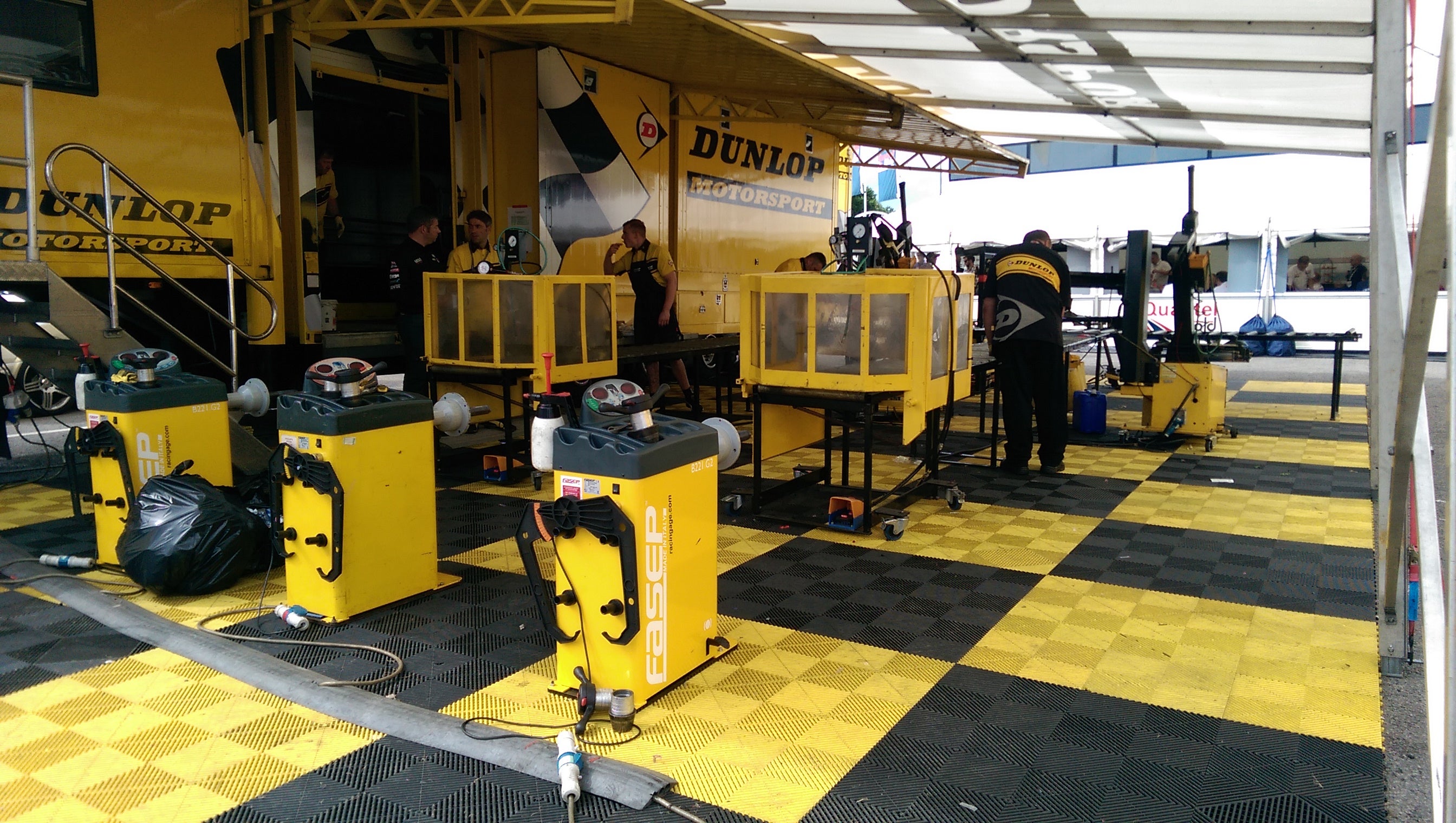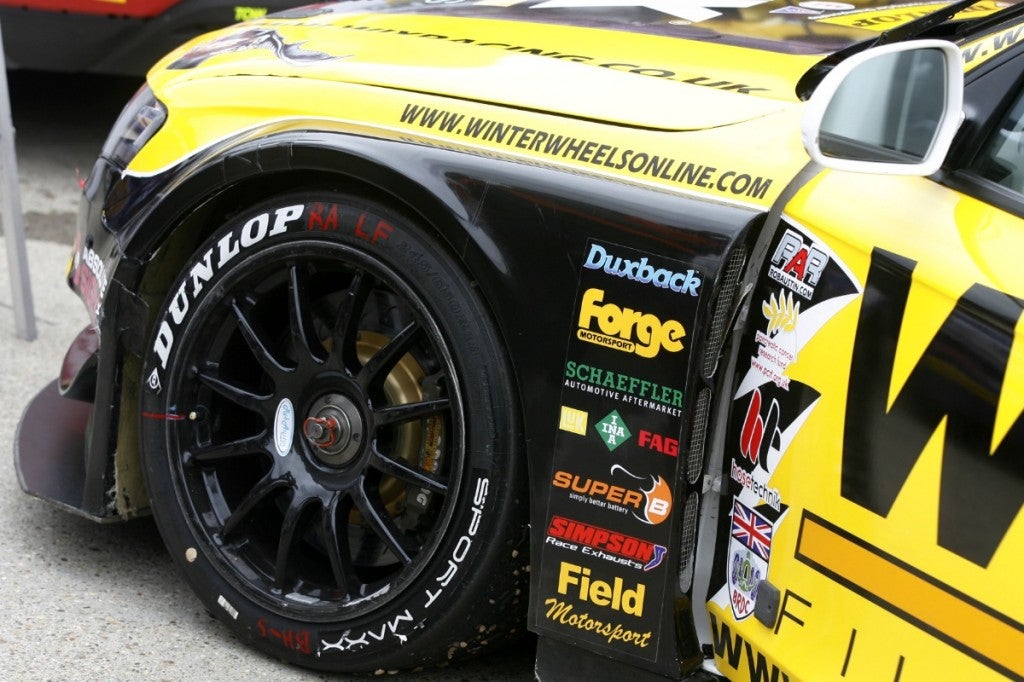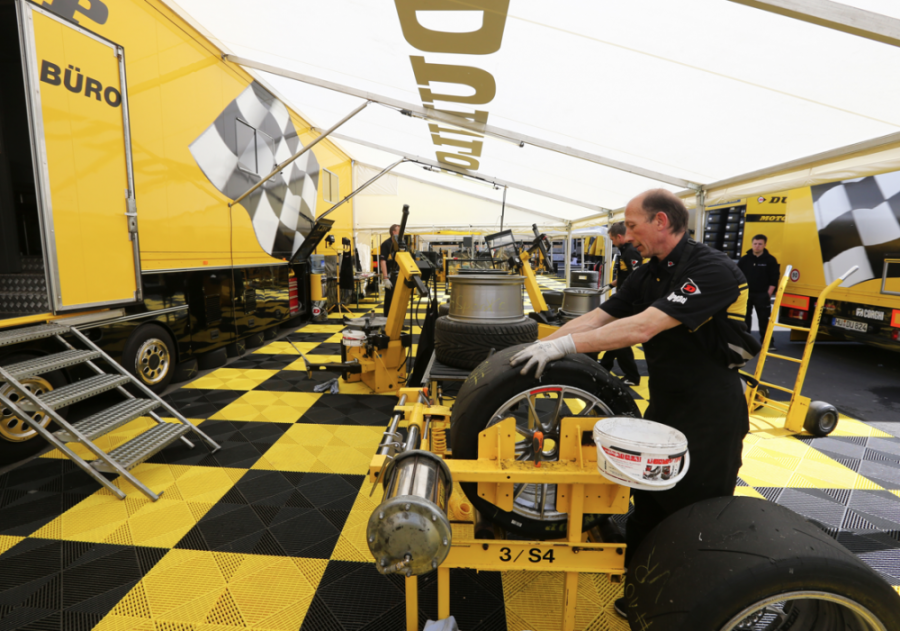 "ATaylor-Jones" (alanjtaylor)
"ATaylor-Jones" (alanjtaylor)
07/03/2014 at 15:42 • Filed to: British Touring Car Championship, BTCC, Dunlop, Tyres
 2
2
 0
0
 "ATaylor-Jones" (alanjtaylor)
"ATaylor-Jones" (alanjtaylor)
07/03/2014 at 15:42 • Filed to: British Touring Car Championship, BTCC, Dunlop, Tyres |  2 2
|  0 0 |

While the crowds at Oulton Park enjoyed an action packed weekend of racing from the British Touring Car Championship, Dunlop's team of engineers were busy behind the scenes. Having supplied tyres to the BTCC and many of its supporting championships since 2003, they are the bond between car and track. With grids full of cars and tyres optimised for grip, over 600 tyre changes will take place from the Friday through to the Sunday. This number would be far higher if it wasn't for teams being limited to 16 new tyres and 4 'marked' (previously used) tyres per typical race meeting. To prevent anybody from using too many new sets, each tyre is fitted with an RFI device so it can be identified.

To enable so many tyre changes over the weekend, the fitting process is made as efficient as possible. Lifts raise the used wheels and tyres onto rollers that span the gaps between the machines to ease the workload on the engineers. After the air is removed, the bead breaker separates the tyre from the wheel which is then passed to a fitting machine. At your local tyre fitters, they'd usually inflate the tyre on this, something that could be dangerous in a racing environment. With drivers leaping over curbs and making contact with other racers, the chances of a wheel cracking are much greater than on the road. To avoid someone getting injured or worse should a wheel shatter, they are pushed into a blast-proof chamber where engineers can see them inflate in safety. After balancing and marking, they are ready for use.

Speaking to Robert Cottam, Tyre Service Engineer for champion Andrew Jordan, it becomes clear very quickly how fitting tyres is only the beginning. Working closely with Pirtek racing, he will look at track conditions and weather forecasts initially. Once Jordan has been on track, Robert will analyse the used tyres to see check how they have 'grained' across the width of the rubber. From this he can advise what compound is working best, whether changes to the suspension may yield more grip and if tyre pressures are correct.

Although these changes could add up to less than a degree of camber or single PSI of pressure they could be worth seconds around a track. With a field as tightly packed as the BTCC, this could be the difference between a place outside the points or a win. It is ultimately up to the driver to decide on what suits best though, what may technically be best may not give the level of feel or balance they prefer. Although grip is vital, so is confidence that the chassis will respond how you want it to.

Dunlop is committed to not just the present but the future too, they are already developing tyres for the 2016 BTCC season and all data collected on track from series across the globe is held in a database to ensure no lessons are lost. This information doesn't just benefit racing drivers though, the track is like a laboratory with new ideas and technologies being experimented with here. What is successful on the track has and will continue to be filtered into tyres for the road.